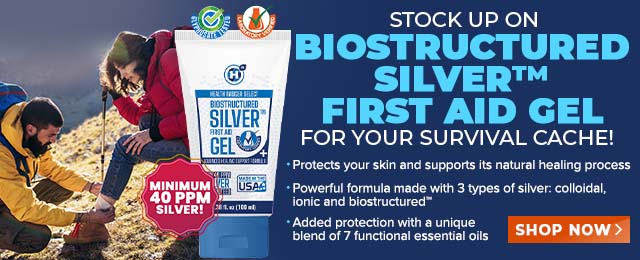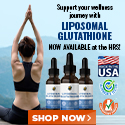BOGUS BREAST REMOVAL: New science reveals that double mastectomy doesn't reduce risk of dying from cancer
Friday, April 08, 2016 by: Julie Wilson staff writer
Tags: breast cancer, double mastectomy, survival rate

(NaturalNews) An 8-year study involving half a million American women with breast cancer, found that surgically removing diseased and healthy breasts did not increase an individual's chance of survival.
The results seem to confirm earlier suspicions that undergoing a double mastectomy, an aggressive procedure that causes emotional and physical pain, does not significantly protect against cancer recurrence.
However, a double mastectomy may be helpful for women with a strong family history of breast or ovarian cancer, and those with a personal history of radiation.
Some breast cancer patients may be undergoing mastectomies unnecessarily
The research was led by Dr. Mehra Golshan, Director of Breast Surgical Services at Dana Farber/Brigham and Women's Cancer Center in Boston, Mass. Scientists followed more than 500,000 U.S. breast cancer patients for more than eight and a half years to observe whether or not their cancer returned, reports the Daily Mail.When a woman decides to remove a healthy breast, it is called a contralateral (opposite breast) prophylactic (preventive) mastectomy (CPM). CPM surgeries involve the removal of both breasts, including the one that contains cancer, as well as the healthy one, according to Susan G. Komen, a breast cancer awareness group.
Based on their findings, researchers concluded that while the number of double mastectomies has more than tripled in recent times, the invasive surgeries did not improve a patient's survival rate. CPM surgeries increased from just under 4 percent in 2002 to nearly 13 percent in 2012.
"Our analysis highlights the sustained sharp rise in popularity of CPM while contributing to the mounting evidence that this more extensive surgery offers no significant survival benefits to women with a first diagnosis of breast cancer," said Golshan.
The findings are major, especially considering how traumatizing it can be for a woman to have one or both of her breasts removed.
A survey of nearly 1,000 women who underwent a bilateral or CPM surgery revealed that 70 percent of them had concerns relating to reconstruction, including, "the longevity; look and feel of implants, pain, numbness, scarring, and reconstruction options."
Others said that they wished they had seen photographs to better prepare them for the final result.
Weighing benefits against the risk
"Patient and caregivers should weigh the expected benefits with the potential risks of CPM, including prolonged recovery times, increased risks of operative complications, costs, the possible need for repeat surgery and effects on self-image," Golshan said.As ecancer.org explains, women who do not carry specific genetic mutations for breast and ovarian cancer often opt for CPM surgeries, going against current guidelines. This is primarily done out of fear.
"[T]he risk of a second primary breast tumour in the breast unaffected at the time of first diagnosis is low compared to that of distant metastases ... A small percentage of patients with specific genetic aberrations such as mutations in the breast cancer susceptibility genes BRCA1 and BRCA2 are known to be at much increased risk of a second primary tumour."
But few patients who receive CPM surgeries fall into these high-risk categories. A decision ecancer.org says is "motivated by a fear of recurrence that is entirely understandable but that is disproportionate to the actual risk.
"Most of these women could be treated very well with lumpectomy, an operation that conserves healthy breast tissue, has a shorter recovery time and fewer long term adverse effects.
"Surgeons are increasingly uncomfortable with the idea of performing extensive operations that they consider unnecessary, but are under pressure to acquiesce to patients' requests for these."
Sources:
DailyMail.co.uk
Komen.org
ECancer.org
Science.NaturalNews.com
Breast cancer at FETCH.news
Get independent news alerts on natural cures, food lab tests, cannabis medicine, science, robotics, drones, privacy and more.
Take Action: Support Natural News by linking to this article from your website
Permalink to this article:
Embed article link: (copy HTML code below):
Reprinting this article:
Non-commercial use OK, cite NaturalNews.com with clickable link.
Follow Natural News on Facebook, Twitter, Google Plus, and Pinterest
- Newly released JFK files reveal Pentagon's role in creating Lyme disease and covid in the same lab
- Ginseng's hidden anti-aging power: How compound K is rewriting the rules of skincare
- “Endgame: The Hidden Agenda 21” unveils a world of conspiracy and control
- L.A.'s rebuilding nightmare: Only 4 permits issued after fire destroys 6,000 homes
- Dr. Suzanne Humphries makes bombshell appearance on Joe Rogan podcast, exposing vaccine industry deception back to POLIOMYELITIS
- Scientists demand FDA withdraw mRNA COVID vaccines amid contamination and gene therapy concerns
- Former Congresswoman exposes CCP's deep infiltration of California through universities, ports, and fentanyl
- “The shame of Minnesota”: Somali immigrants behind $250 million child nutrition fraud in largest COVID-era scam
- PROCESSED TABLE SALT in foods found to fuel depression
- Here are TEN all-natural ways to protect your garden without using harmful chemicals
- “Independent” anti-Russia outlet MEDUZA faces COLLAPSE as US funding dries up
- BPA: The hidden hormone disruptor sabotaging your health - and how to fight back
- Discovery of vast underground city beneath Giza pyramids challenges human history
- The hidden battle in your glass: How A1 and A2 milk could shape your health
- Chewing gum's dirty secret: How your daily habit could be flooding your body with microplastics
- Catastrophic 7.7 earthquake devastates Myanmar and Thailand; death toll could reach 100,000
- Black cumin seed oil emerges as a powerful ally against breast cancer and chronic inflammation
- CDC finally halts $11 billion COVID funding scam as health officials admit the ‘pandemic’ was a fraud
- Newly released JFK files reveal Pentagon's role in creating Lyme disease and covid in the same lab
- Analysis: The coming economic collapse, a mass uprising and Trump's three secret weapons to halt the growing revolt
- Festive flavors: The sweet history, nutritional profile and health benefits of pecan pie
- Elon Musk: Aliens could be here on Earth RIGHT NOW
- Trump reverses course on Gaza plan, says “nobody is expelling Palestinians”
- Big Pharma's $8 Billion bribery scheme exposed: how doctors are pushed to prescribe junk science, not heal
- Boys are back in town: Trump’s patriotic alpha crew takes the wheel while toxic females ride in the backseat
- Reclaim your health: How midlife exercise reverses years of inactivity
- A lack of integrity in Academia: Harvard professor found GUILTY of fraudulent research to promote CRT theory
- Survival 101: Effective EMF blocking techniques
- EPA advisor admits the agency is funneling billions to climate groups ahead of Trump’s return to White House
- Dr. Mike Yeadon releases 15-minute testimony - WATCH - about genocidal intent of COVID “vaccines”
- 5 Simple steps to boost your brainpower: How to strengthen executive function in a distracted world
- Florida takes a stand: DeSantis proposes permanent ban on mRNA vaccine mandates
- Sugarcane extract superior to cholesterol-lowering drugs?
- Mike Adams Sermon 66: God will DESTROY ISRAEL for its wickedness
- Pilots report mysterious lights 'moving at extreme speeds' across Oregon skies
- Space war brewing? Russia threatens to destroy Starlink satellites
- EPA advisor admits the agency is funneling billions to climate groups ahead of Trump’s return to White House
- California's social media censorship law struck down: A victory for free speech or a threat to online safety?
- The Health Ranger releases “Vaccine Zombie” song and music video, using AI-animated zombies for the music video
- Dr. Mike Yeadon releases 15-minute testimony - WATCH - about genocidal intent of COVID “vaccines”
- The pandemic as a tool for INDOCTRINATION: Understanding “The Indoctrinated Brain” by Dr. Michael Nehls
- Newly released JFK files reveal Pentagon's role in creating Lyme disease and covid in the same lab
- Florida takes a stand: DeSantis proposes permanent ban on mRNA vaccine mandates
- Mike Adams releases country western hit single: Goin’ Back in Time is Comin’ Home
- Mike Adams releases music poetry sensation: A Child of God
- “Why we influenced the 2020 elections”: Facebook files reveal the coordinated effort to bury the Hunter Biden laptop story
- Unpacking the Lies That We’ve Been Fed – new song and music video released by Mike Adams, the Health Ranger
- RFK Jr. clears key hurdle: Sen. Susan Collins backs controversial HHS nominee, signaling a new era for health policy
- Mike Adams releases new song and music video: Nothing More Disgusting Than a Globalist
- Michigan sheriff announces criminal investigation into 2020 election crimes, Dominion Voting Systems
- Israeli soldiers accused of even more torture and abuse in the West Bank
- Migrants are taking advantage of recent hurricanes to scam residents and loot their homes
- House Intelligence Committee calls for the ARREST and PROSECUTION of Dr. Anthony Fauci
- Rep. Nancy Mace introduces bill to ban biological males from female facilities on federal property
- Red Cross issues warning to stop blood plasma donations from vaccinated people
- Scientists confirm: GENIUS brain function can be spontaneously unleashed in humans without any apparent cause
- EPA advisor admits the agency is funneling billions to climate groups ahead of Trump’s return to White House
- HYSSOP: What research reveals about the health benefits of this ancient holy herb
- Two containers with completed ballots fall out of truck in Florida
- Fully vaccinated about to see “tsunami” of illness and death, warns virologist
- Global leaders unite to clamp down on “misinformation” with UN-backed Cascais Declaration
- BREAKING: 2025 NDAA authorizes mandatory military draft of WOMEN across America… as Pentagon pursues global NUCLEAR war with both Russia and China at the same time
- Michael Yon warns of a ZIONIST TAKEOVER in Trump’s second administration
- BOMBSHELL: DNA testing kits are a SCAM to develop ethnic-specific bioweapons
- Ozempic and Wegovy weight loss drugs are injectable LIZARD VENOM PEPTIDES that may unleash a devastating wave of organ failure… side effects align with symptoms of SNAKE BITES
- Israeli soldiers accused of even more torture and abuse in the West Bank
- These 13 countries just signed an agreement to engineer a global FAMINE by destroying food supply
- NASA admits that climate change occurs because of changes in Earth’s solar orbit, and NOT because of SUVs and fossil fuels
- RFK Jr. clears key hurdle: Sen. Susan Collins backs controversial HHS nominee, signaling a new era for health policy
- Sermon 30: How Jesus reveals Caesar’s FAKE CURRENCY and FALSE AUTHORITY
- Coriander seeds: Ancient medicine backed by modern science
- Arizona officials claim Maricopa County needs 10-13 days to tabulate results of the election
Science News & Studies
Medicine News and Information
Food News & Studies
Health News & Studies
Herbs News & Information
Pollution News & Studies
Cancer News & Studies
Climate News & Studies
Survival News & Information
Gear News & Information
News covering technology, stocks, hackers, and more



"Big Tech and mainstream media are constantly trying to silence the independent voices that dare to bring you the truth about toxic food ingredients, dangerous medications and the failed, fraudulent science of the profit-driven medical establishment.
Email is one of the best ways to make sure you stay informed, without the censorship of the tech giants (Google, Apple, Facebook, Twitter, YouTube, etc.). Stay informed and you'll even likely learn information that may help save your own life."
–The Health Ranger, Mike Adams












































